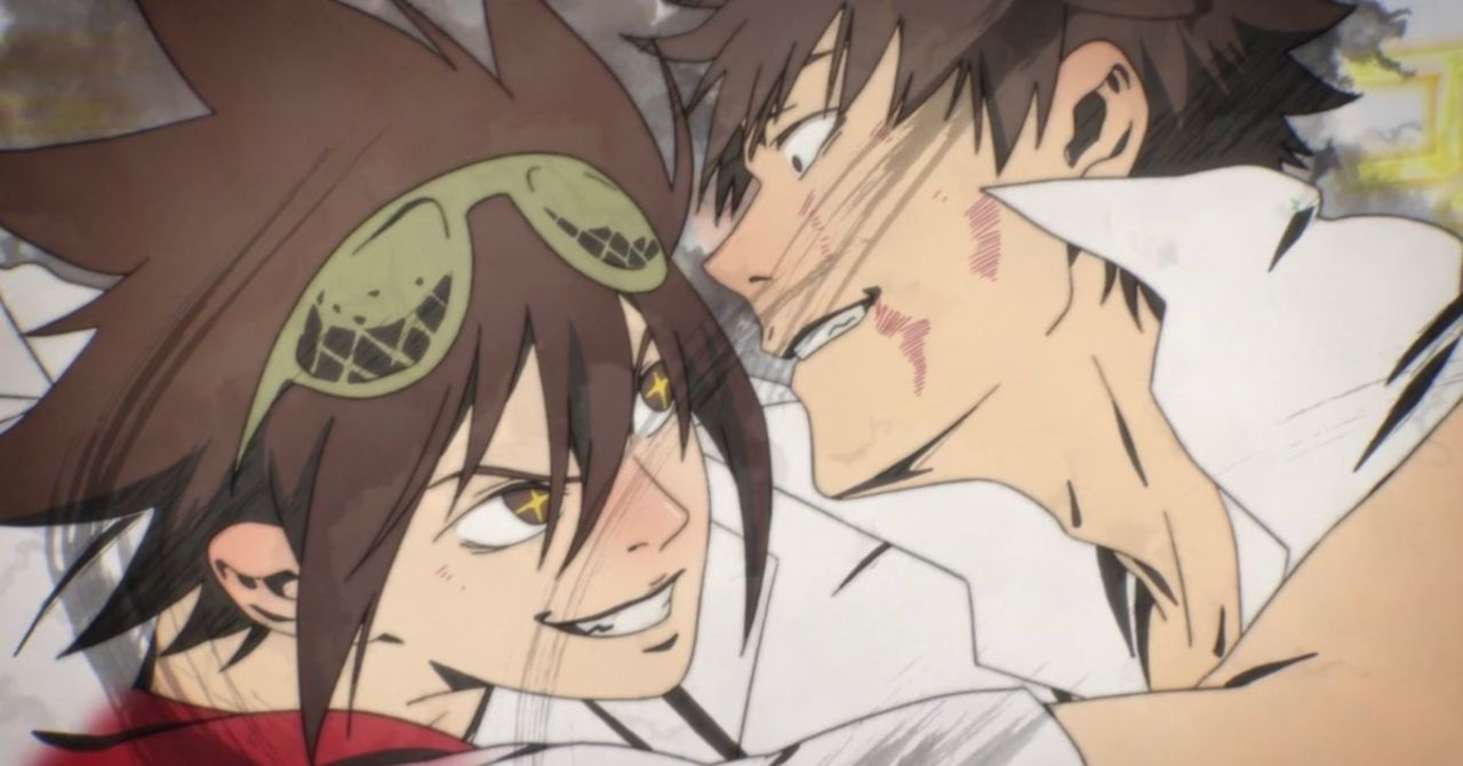
Every once in a while appears an anime from nowhere, that captivates its audience’s imagination, and defines its generation. Some deliver compelling writing, redefine genre rules, or break medium conventions through exceptional storytelling. Others build on prior successful works and develop their own voice. Even shows that adhere to a formula can present a worthwhile experience when the pieces correctly align.
The God of High School is none of these things.
Crunchyroll’s newest original series is its latest attempt to throw its hat into the ring (no pun intended) of producing exclusive shows to promote the service. In recent months, the company has been scrutinized regarding its failure to address working conditions for its underpaid translators and localization staff, while quietly adding offline downloads to its service for an additional $2 a month as part of their new tiered subscription deals. As some have pointed out, this feature is not only already included by its competition at the entry level, but also their WarnerMedia owned siblings, notably VRV and HBO Max. Putting the company’s controversies aside, it’s no surprise Crunchyroll has a lot riding on the success of its Original branded shows. Will it be enough to stay competitive and win over new fans?
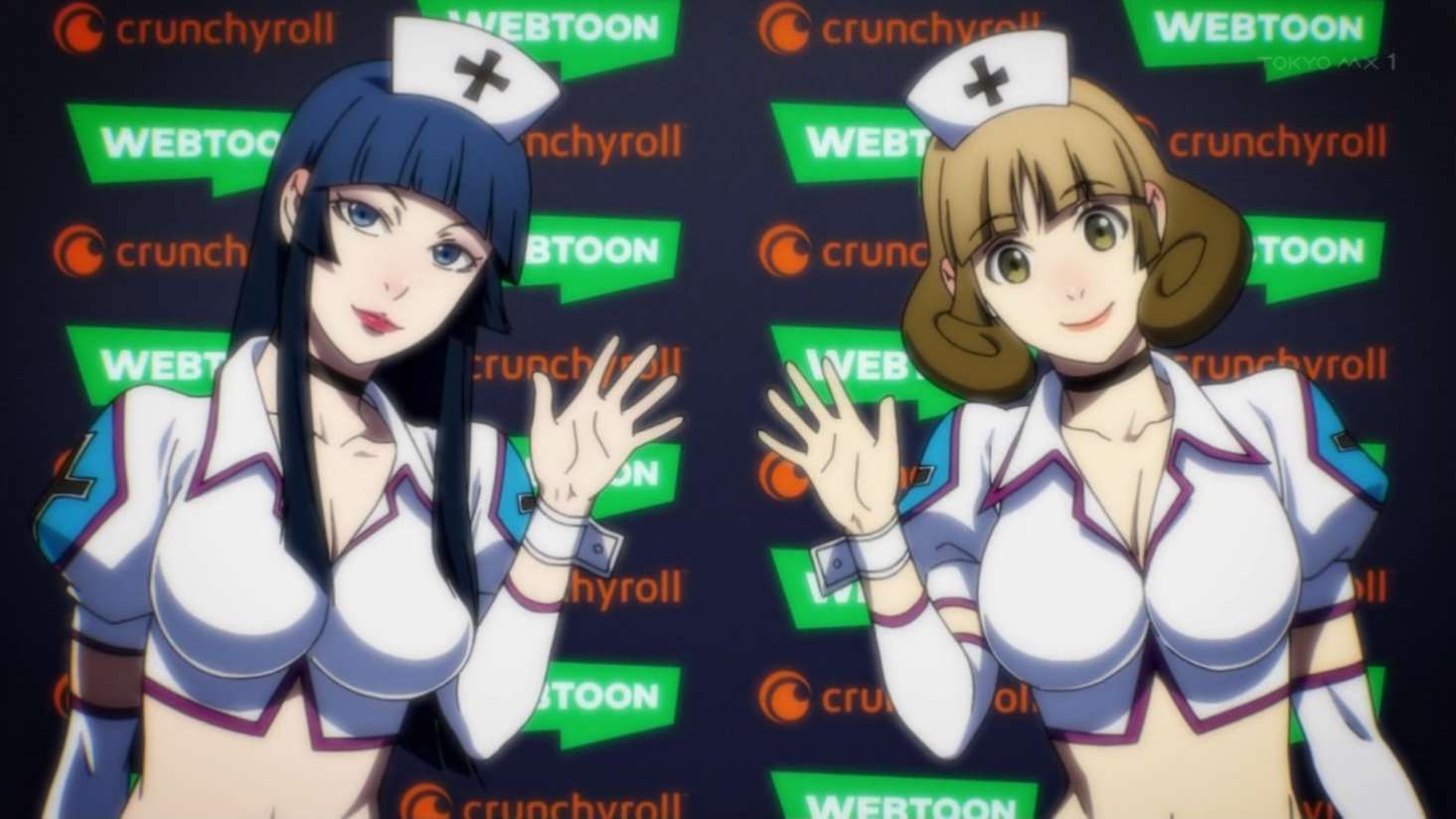
Set up/Stand up
Let’s start with the good. From a purely audio and visual level, GOH certainly held no expense. Studio MAPPA (Dororo, Kakegurui) is on a roll this year, fresh off the heels of Dorohedoro and soon to take the reins of Attack on Titan’s final season, along with the anime debut of Jujutsu Kaisen. Director Sunghoo Park (Garo: Vanishing Line) brings out his best fight choreography and action set pieces whenever the script calls for it, and the results are certainly electrifying most of the time.
Composer Arisa Okehazama is a new face to the anime scene with GOH serving as their first major project. Okkehazama is also set to tackle Jujutsu Kaisen – another MAPPA and Park collaboration, fittingly. Featuring a mix of electronic, rock, and even some classical/symphonic/video game-inspired elements, the soundtrack adds a vibrant roar to add further tension to the action, notably the main theme and self-titled “Friends.” Where it comes up short is in the quieter/somber moments which, while serviceable enough, don’t quite reach the same level of impact or replayability.
Here’s the rub: almost all of GOH’s redeeming qualities stem from its superficial elements. The visuals, the soundtrack, even the story’s few “character moments” are all underserved the moment the show tries to do anything with the cast beyond them beating the ever-loving shit out of each other. It’s like someone took a bad fanfiction or a parody of a shonen and approved it for a 13 episode anime. I expect many fans will argue “there is some fun to be had, if you are willing to look past its narrative flaws,” but even considering its plot, characters, and writing separately, it’s not a very good anime.
Do Whatever You Want
Based on the manhwa by Yongje Park, GOH focuses on Jin Mori, a 17 year old high school student and martial artist who seeks to challenge himself by facing tough opponents. When fighters from all over the globe are brought together to participate in The God of High School tour nament, he eagerly accepts the invitation. Competing for the grand prize of “any wish granted”, Mori, along with two other South Korean fighters he befriends, enters the ring, unaware of the clandestine sinister organizations and their true intentions behind the tournament. Episode 1 opens on a strong note, nailing the thin line between introductions, plot, and fun comedy. When it comes to establishing main leads Mori and his companions Han Daewi and Yu Mira, GOH defaults to its signature catchphrase of “Do Whatever You Want” whenever the show is asked to define its heroes.
Our story begins on the tournament’s opening day where we meet our main trio and hear each of their standard “why I am competing in this tournament” spiels. Jin Mori just wants to fight strong opponents. Yu Mira wants to revive her family’s fighting style by showcasing it in the tournament. Han Daewi… well… he just wants money. Hey, the man’s got priorities! I’ve got bills too, I can relate!

Not the most original backstory, but that’s not important. There’s only so much time within a 13-episode cour that can be devoted to a single story aspect, and with main leads with simple motivations, a few elements can be condensed without losing much. The issue with GOH’s narrative is its reliance on the premise that Mori, Daewi, and Mira are a tight-knit group. It constantly reminds the audience that these three are supposed to be “best friends,” while never firmly establishing each character individually or as a group. There’s no chemistry or camaraderie beyond the occasional fistbump, and the few moments they interact on-screen feel hollow and artificial. GOH wastes too much time on side stories and characters that don’t affect the general flow of the main plot. Many of these are swiftly written out to progress to the next fight or are never referenced again, which makes it harder to become attached to any character.
Anime-sphere regulars – even those not watching GOH – are likely aware of the infamous “wedding episode.” Marriage/Bonds is one of several episodes that embodies GOH’s creed of letting its characters and script go unchecked, highlighting my biggest complaint with the show. All too frequently, events happen with no other explanation beyond “just because.” Characters repeatedly make spur-of-the-moment decisions that run counter to whatever little backstory is established. Worst yet, the show continues to double down on the trio’s “friendship” by overselling how much these three actually interact with one another without ever developing audience sympathy. Why should we care about them when there are no stakes established and the odds are already in their favor?
Don’t just take my word for it. Let’s look at a few examples.
*Minor SPOILERS – I promise you won’t lose much.*

Marriage/Bonds begins with a stranger walking up to Mira and asking for her hand in marriage. Mira promptly accepts, no questions asked. She figures his connections can promote her sword style better than going through the tournament. Mori is opposed, because she’ll drop out of the tournament and won’t be able to fight him. To fully explain the batshit absurdity of this episode would require another article and a couple of rounds, so I’ll summarize. Crazy Rich Groom is after Mira’s sword which is now (apparently) an all-powerful weapon. Our good boys Mori and Daewi crash the wedding (I’ll admit I got a laugh at this), and Mori gives Mira the standard pep talk about doing what she actually wants to. You know you’re in a bad place when Jin “Do Whatever You Want” Mori is the freaking voice of reason. A fight ensues and Crazy Rich Groom unleashes his Persona (called Charyeok in GOH speak).
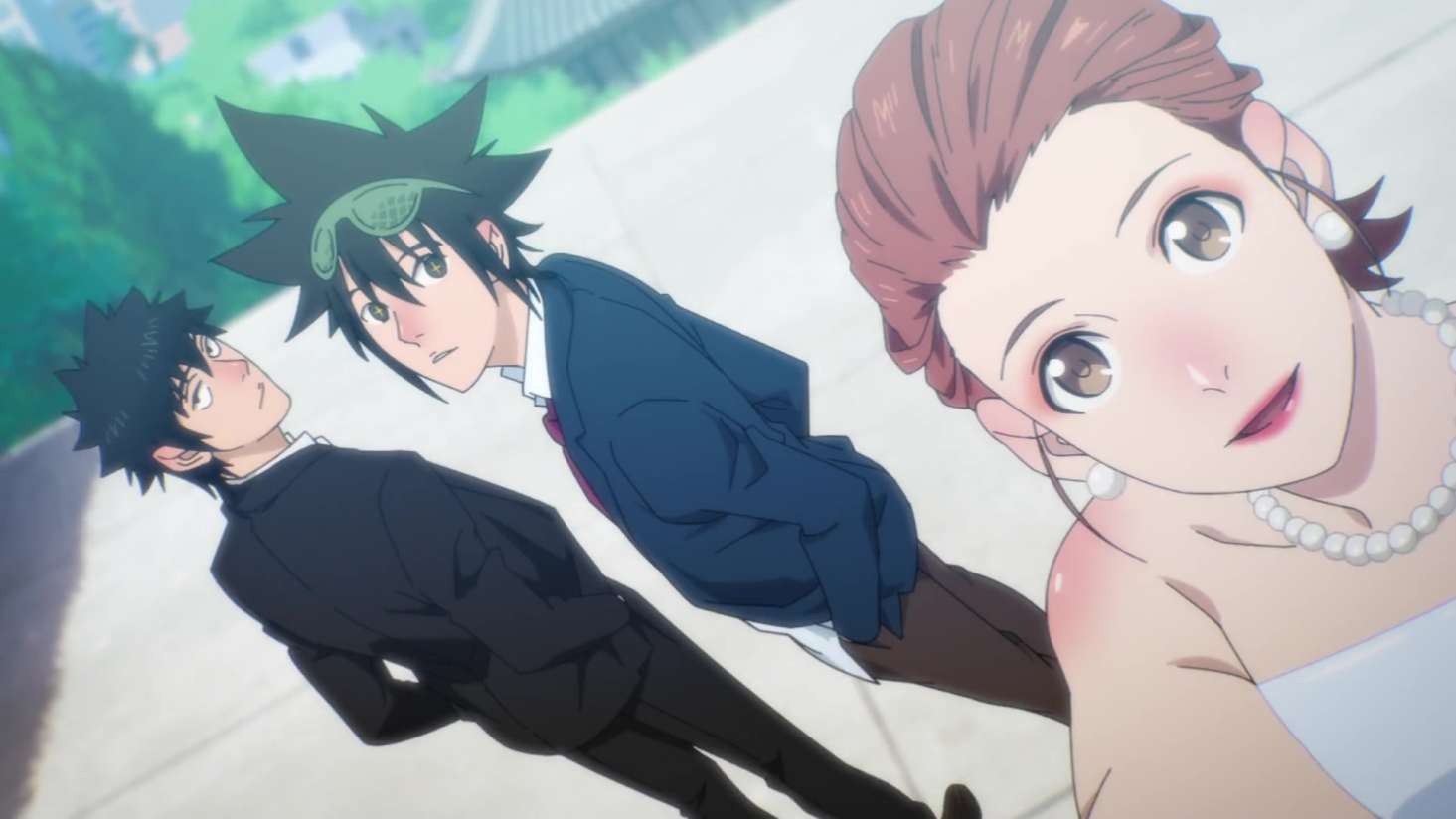
It gets better: after getting his ass handed to him, Crazy Rich Groom swipes Mira’s “God-slaying” sword and drives off into the sunset, but that’s okay, because Mira found friends who she only met two episodes ago and – as far as the viewer is concerned – hung out on a bridge that one time. The same “priceless” sword that they searched for under said bridge after Mori dropped it in the river by mistake. The episode should have wrapped up there, but then abruptly cuts to a tournament fight between a bloodied Mira and Daewi who savagely beats her with ease. Insultingly enough, it ends with a snapshot of the trio to remind the audience of how “close” their bond is.
This all occurs in just one episode with next to no buildup or directional flow. If it were just one episode, I could overlook it, but GOH recycles the same nonsense formula repeatedly. When it’s Daewi’s turn to don the dunce cap in episode 5 (Ronde/Hound), Mori is once again able to overcome all obstacles by beating sense into him.
I suppose most viewers were too distracted by the premier Sakuga slugfest of Mori and Daewi’s brawl to notice the poor writing. That’s okay – I was too distracted during the repeated flashbacks to the character introduced that same episode to be unceremoniously “killed” off screen and never to be referenced again. What’s more upsetting is the show’s failure to explain the crazy religious occult and the literal “Sword of Damocles’’ that spawned from the beyond. If you went into this article thinking GOH was purely a martial arts anime, it’s not long after that the show drops all pretense, which leads me to my second main issue with the anime:
Oath/Meaning(less)

GOH’s most underwhelming aspect is not its ideas, or even its characters, but its poorly executed narrative and world building whenever it shifts focus from the fighting. Far too often, GOH introduces something, spends about two minutes explaining why it is important, and then discards it by the next episode.
Pop Quiz: remember the announcer from the beginning of the tournament? How about Daewi’s best friend? The commissioners? Hell, name any other fighter beyond the main characters and tell me one notable trait that impacts the forward momentum of the plot. Almost everyone in GOH has a backstory, some more interesting the main cast, and yet so little of it contributes to the central conflict. The irony is the side characters and supplementary plots get more development than the central leads. Occasionally, it even does a far better job highlighting its one-off fighters for the brief moments they cross paths with our main team than it does for its own protagonists. GOH has all the ingredients for a shonen, but no idea how to construct a compelling narrative.
GOH’s initial preliminaries give way to the main tournament – a series of 3-on-3 team matches. This serves as a vehicle to keep our main leads together. It’s here the show attempts to flesh out the powers that exist in this world. Utilizing Charyeok to literally summon the power of Gods and other divine figures, fighters have the potential to tap into their latent abilities should they possess the aptitude to wield this “Borrowed Power.” On its own, this is interesting, but much like the show’s other decisions, much of its existence is left to the viewer’s imagination and never properly explained. Are regular citizens aware of Charyeok? Can they see these manifestations or do they not question why a man is torn to shreds by an invisible shark? If this power is part of everyday life, why is this just now a factor in this tournament and why is our main team only now learning about it? For a series going off the rails into what should be an explosive development, it amazes me how little reaction is displayed by the show’s cast once Charyeok becomes integrated with the fights. [Editor’s note: I’m not seriously looking for answers; I’ve long since checked out.]
More jarring is its implementation of primary antagonist, death cult Nox. Even if you consider GOH as purely an over-the-top action show with cool fight scenes, it becomes impossible to separate the mystical portion given how interwoven it is with the tournament storyline. About half way through the show, the tournament continues on one side while Nox wages an all-out war with the commissioners – characters who have not been utilized until this point. Much later, the leads become ensnared in Nox’s schemes, while GOH continues to throw new characters and plot points irrelevant to the behind-the-scenes revelations. Entire episodes contain two or more fights happening simultaneously with nothing to tie them together organically, let alone develop their individual characters beyond their martial art and special move. GOH’s impressive visuals do little to obscure the show’s lack of consistency when it comes to world building.
Despite praising the visuals, this is also where the show’s only saving grace can no longer sustain GOH’s juvenile script. Once the show starts throwing ancient deities into the mix, the animation takes a notable dip in quality during the second half. It’s not a severe drop, but not as sharp as earlier fights when it merely depicted martial arts. In the show’s final episodes, I found myself often disoriented at the fight choreography as the shows struggles to fit in as many fights as possible while dropping random events that would make a game of Super Smash Bros look tame. Large scale “supermoves” begin to comprise the bulk of the final stretch’s scenes all happening concurrently, and when paired with a script taking too many liberties to develop its ideas, it’s no longer fun – it’s frustrating.
A Crunchyroll Original – Revisited
![Fatality. [Mortal Kombat (2011)]](https://www.tay2.org/wp-content/uploads/2020/11/image-86.png)
My final issue with GOH has less to do with the show or the source material, but a pattern I’ve identified since my review of Tower of God. Ever since Crunchyroll Originals became a pilot program for the company to produce its own line of original entertainment, critical discussion has centered on its handling of its webtoon adaptations. If you only account for viewership and the company’s advertising, the shows appear successful. Where the line becomes blurry is when each show is analyzed on its own merits.
It’s no secret that anime is a very expensive and time-consuming product to produce. When you examine the rate of these adaptions (one or two Originals a season), each 12 – 13 episodes adapting over 100 chapters of material in one season by sacrificing substance for “Wow” factor, it becomes clear what was prioritized in the rush to get these out the door. Both ToG and GOH have an abundant amount of story content and action to fill several seasons, a built-in audience and, if Crunchyroll’s own statistics are accurate, more than enough appeal to justify a long-term partnership and franchise. So why start off with a weak hand, limiting these shows to a single cour season, compressing multiple storylines with no thought of how to construct and pace a coherent series?

The easy answer is people will watch if you market it well enough. “Hype” encourages fans to overlook immediate flaws, and given Crunchyroll’s aggressive campaign on all corners of the web, it’s clearly working out for them – for now at least. I can’t help but draw comparisons to the way Disney mishandled the new trilogy of Star Wars films and spin offs with varying degrees of quality, to the point that they were forced to dial back the volume of content due to waning consumer interest. Or to cite another film franchise, compare the way Marvel/Disney methodically planned out their films over the years versus Warner Bros’s rush to capitalize DC’s properties in their own Cinematic Universe within a much shorter period. The DCEU didn’t earn anywhere near what Warner Bros initially hoped for. Crunchyroll appears to be considering a similar conundrum in its partnership with these properties and its non-committal approach in producing several series at once to see which ones ultimately stay afloat.
So here’s my final piece of advice: stick to one or two series a year and plan them out for at least two seasons. I’m not advocating that webtoon adaptions follow the continuous Shonen model as exemplified by Black Clover or Boruto. It’s an outdated model that results in diminished quality and a much slower paced show with the padding out existing content or producing “fillers” – and let’s be honest, nobody wants that! There are countless examples of modern Shonen and anime in general that succeed with the seasonal approach and maintain a level of consistency, quality, and pacing that construct their stories with considerably less brand investment, much less a financial boost from one of their key distributors.
“But Dark Aether!” you say. “If we don’t support these unconditionally, we won’t get any more seasons! And then the great webtoon/manhwa era won’t take off like the ancient anime sages foretold!” Let me stop you there – Crunchyroll Originals aren’t going anywhere. Despite my complaints, we’re all but guaranteed at least another season or two given their mainstream status and natural appeal. You don’t need to universally approve of a series or stop supporting it altogether. However, that doesn’t mean you should settle for less. Even if you genuinely enjoy Crunchyroll’s take on these manhwa, I hope you want what comes after to be better than before.
Tower of God, The God of High School, and any future Crunchyroll Original webtoon adaption won’t fail for lack of an audience: they’ll fail on their own merits for lack of foresight to plan ahead.
The Tournament Is Over (Final Thoughts)
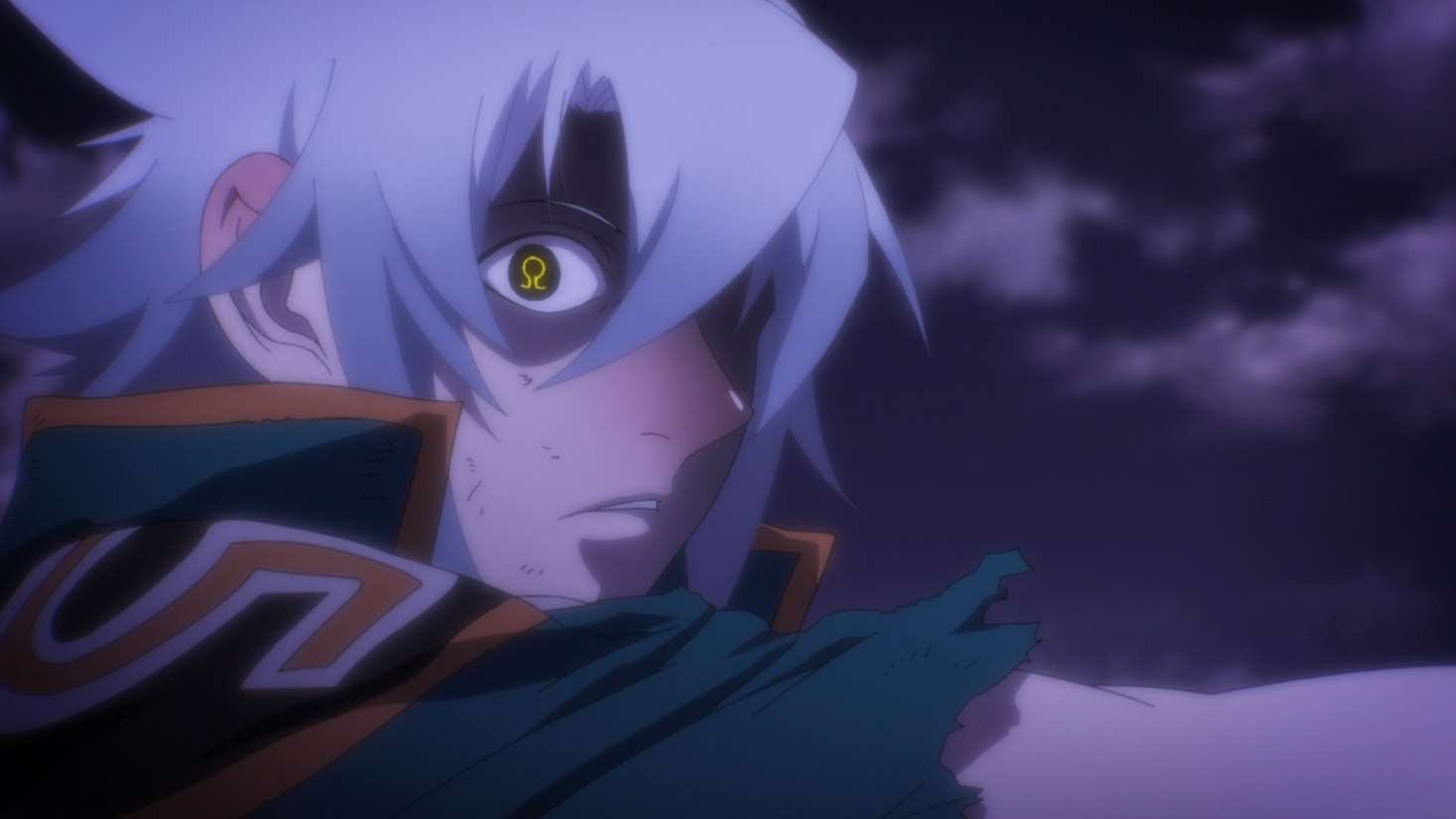
I want to address one last point that I’ve seen arise time and again – without fail – every time someone tries to have a serious discussion about these specific shows with a quote of my own: “A work is only as good as the medium it’s being adapted into, regardless of its origins. If we’re going to remove criticism, then you might as well drop all media and pick up a book.” It’s a huge disservice to both the anime and the original work if they can’t exist independently, nor does it bode well for the series if both are mandatory for a basic comprehension of the plot. Is the goal of an adaption not to adopt the source material into a new medium for a global audience, regardless of familiarity with the original?
The God of High School is nothing more than another luxury display vehicle for Crunchyroll. At best, GOH proves that MAPPA is still a creative force to be reckoned with, but even they can’t work miracles with lackluster material. At worst, it emboldens a dangerous precedent established by Tower of God, taking advantage of passion and “Hype” by rewarding failure. For some, visual spectacle will be sufficient to provide entertainment for a few hours, but nothing more memorable than the select clips that will inevitably make their way to YouTube. Remarkably, GOH underperforms its sibling Crunchyroll Original in every notable area with its weak writing, one-dimensional cast, and poor pacing.
It’s a shame to see Crunchyroll striking out two for two (three if we count Giabate), and yet, I can think of no better show at this time to encapsulate my disappointment. The God of High School won’t be remembered as another successfully mediocre shonen punching below its weight. It’s simply one long overhyped tournament arc that can’t be bothered to put up a decent fight.

Special thanks to Docktorkev for editing and offering suggestions for this post.
All screenshots taken from Crunchyroll.
Dark Aether is a writer/contributor for TAY and AniTAY. You can check his previous writings here, Medium, or follow him on Twitter @TheGrimAether. Not Dead Yet.
Recent Posts:
- Dark Aether’s Top 10 Anime of 2023
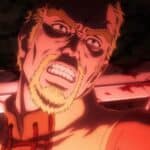 Welcome to part two of the Aether Awards, my annual check in where I rank my favorite content in one convenient place. This year, I reverted to the usual games to anime order, so if you’re new here or missed part 1, you can catch up below. Dark Aether’s Top 7 Games of 2023Depending on … Read more
Welcome to part two of the Aether Awards, my annual check in where I rank my favorite content in one convenient place. This year, I reverted to the usual games to anime order, so if you’re new here or missed part 1, you can catch up below. Dark Aether’s Top 7 Games of 2023Depending on … Read more - Dark Aether’s Top 7 Games of 2023
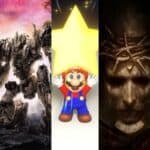 Depending on who you ask, 2023 was either the best or worst year for video games. Or to be precise, 2023 was a good year for playing video games, a bad year to be covering games media with job uncertainty on the rise, and one of the worst years for game developers and the industry with multiple studios and companies reporting layoffs at an alarming rate. Unlike that other award show, it’s difficult for me to look back at the year as a whole and not see the cracks that have begun in between several of the biggest games that will undoubtedly come to redefine the video game landscape once more.
Depending on who you ask, 2023 was either the best or worst year for video games. Or to be precise, 2023 was a good year for playing video games, a bad year to be covering games media with job uncertainty on the rise, and one of the worst years for game developers and the industry with multiple studios and companies reporting layoffs at an alarming rate. Unlike that other award show, it’s difficult for me to look back at the year as a whole and not see the cracks that have begun in between several of the biggest games that will undoubtedly come to redefine the video game landscape once more. - 10 Years Later, Radiant Shines Brighter Than Ever
 Tony Valente’s Radiant is a shonen tour de force and a beautifully powerful story of survivors, heroism and humanity.
Tony Valente’s Radiant is a shonen tour de force and a beautifully powerful story of survivors, heroism and humanity.
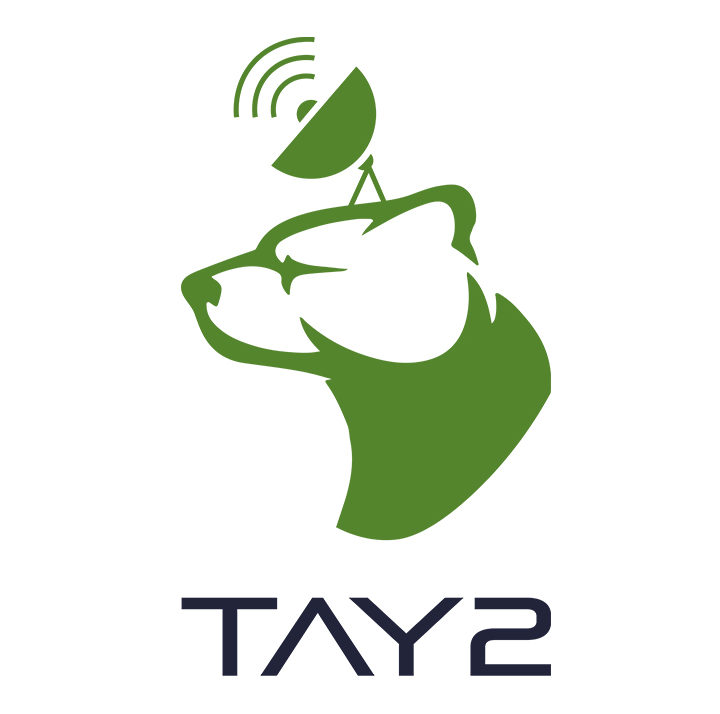
Get involved!
Comments